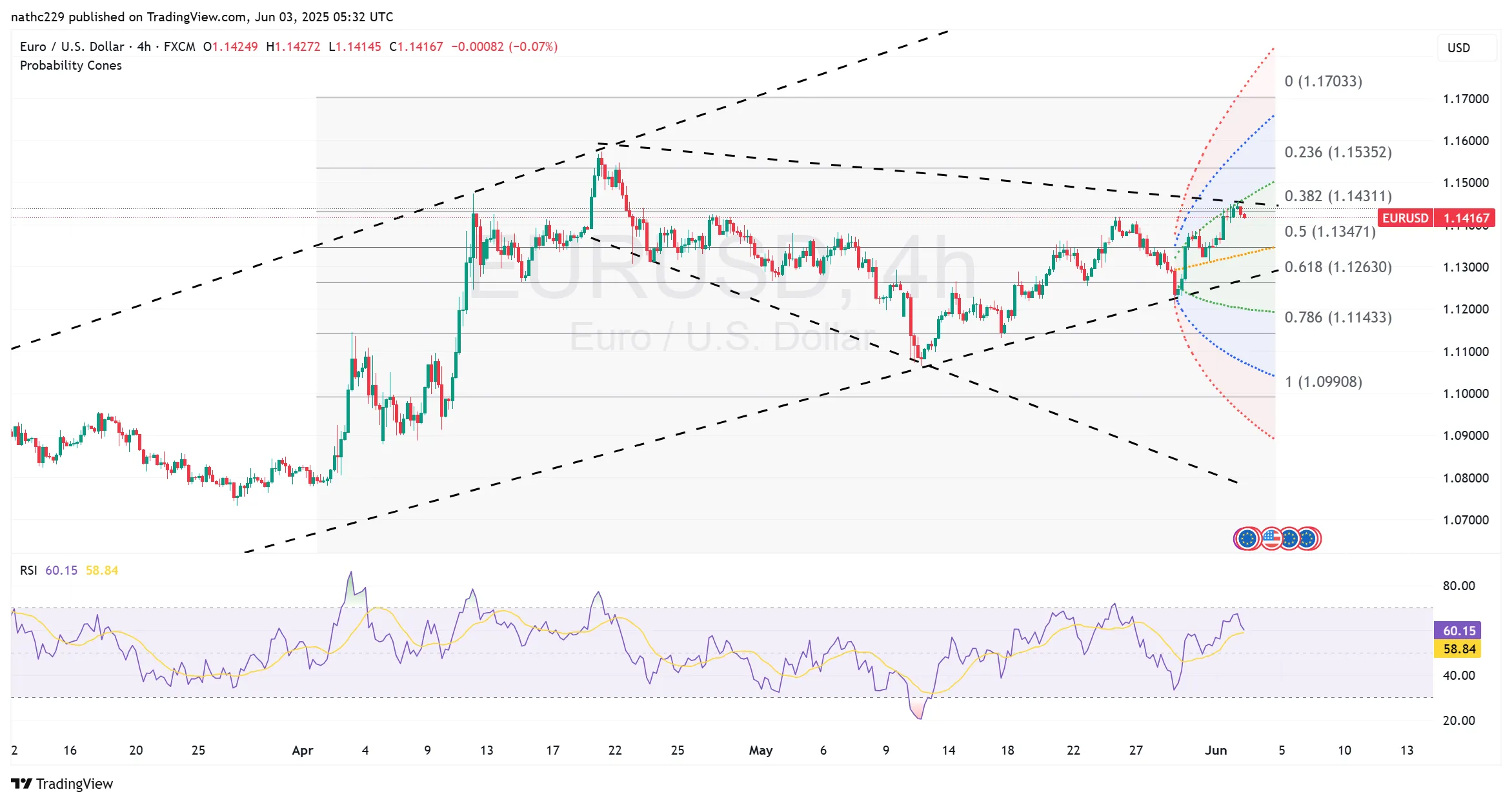
EUR/USD climbs to 1-1/2-month highs amid yield spread shift; technicals favor bulls ahead of key US data
EUR/USD climbs to 1-1/2-month highs amid yield spread shift; technicals favor bulls ahead of key US data
Technical Analysis:
EUR/USD kicked off June on a firm footing, reaching a fresh one-and-a-half-month high at 1.1449 during Monday’s New York session after rebounding sharply from an earlier dip near 1.1400. Initial U.S. dollar strength waned quickly following disappointing May ISM manufacturing PMI figures, which triggered a decline in U.S. Treasury yields and boosted demand for the euro. Gold surged above $3379.00, further pressuring the dollar and underscoring the shift toward risk diversification and away from the greenback. German-U.S. yield differentials also narrowed significantly, adding to euro bullishness by supporting EUR/USD’s upward momentum during much of the trading session.
Technically, the currency pair maintains a robust bullish configuration, supported by rising daily and weekly RSI indicators that suggest continuing positive momentum. EUR/USD remains comfortably above the critical Ichimoku daily cloud top as well as the ascending trendline originating from the February 3 daily low, which has repeatedly provided strong support following tests on May 12 and May 29. The recent rally above the 5-day moving average (currently near 1.1385) further confirms short-term bullish strength, highlighting increased market confidence in euro appreciation. As a result, the technical landscape strongly favors further upward progress as long as the pair holds above key trend support, currently around 1.1350–1.1375.
